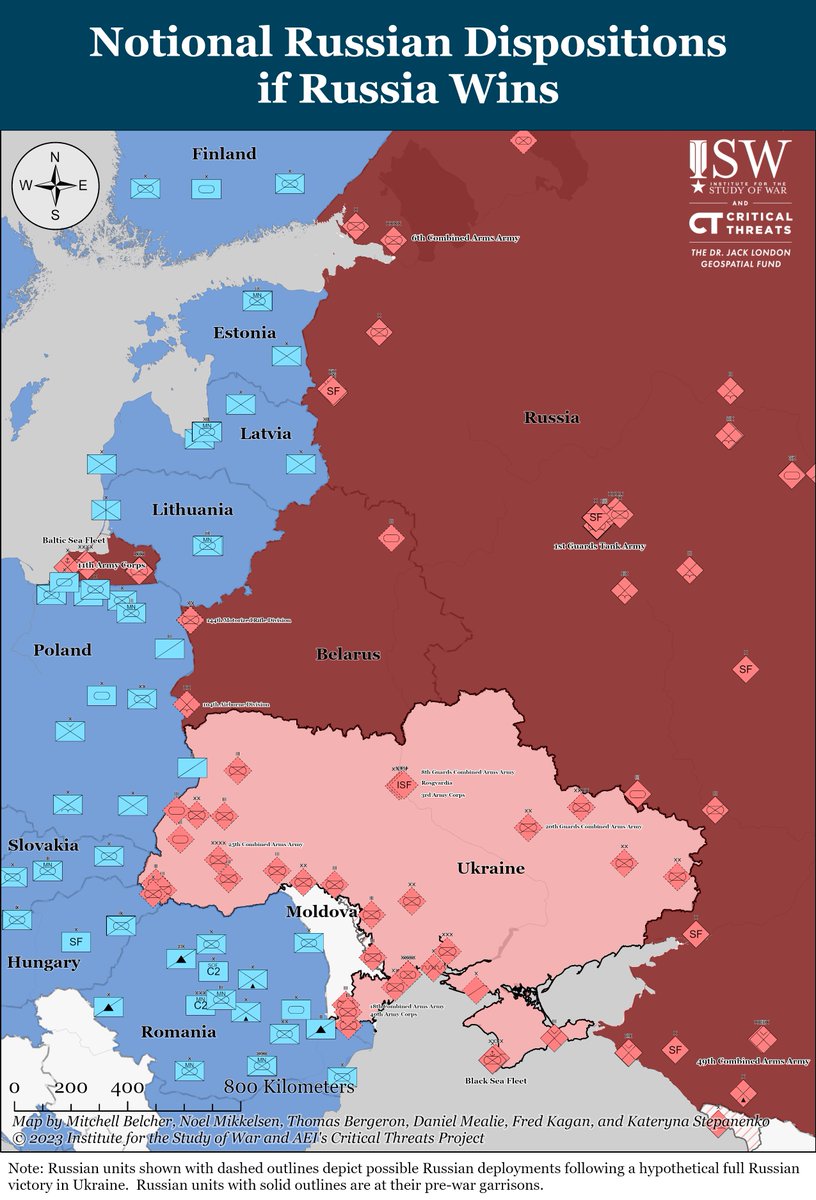Situation 1: Pre-February 2022
1/ Before the full-scale Russian invasion of February 2022 non-Baltic NATO states faced no serious conventional military threat from Russia. 🧵(1/8)


1/ Before the full-scale Russian invasion of February 2022 non-Baltic NATO states faced no serious conventional military threat from Russia. 🧵(1/8)
https://twitter.com/TheStudyofWar/status/1735366664764702978


2/ The Russian ground forces had one airborne division and a mechanized infantry brigade near the Estonian and Latvian borders and the equivalent of a division in the exclave of Kaliningrad...
3/ ...which is physically separated from Russia and a poor launching pad on its own for an attack on Poland and Lithuania, which it borders.
4/ The next closest Russian forces to Poland were about 360 miles to the east on the far side of Belarus. No Russian troops threatened Slovakia, Hungary, or Romania.
5/ The Russians had been building an air defense network relying on their advanced S-300 and S-400 long-range anti-aircraft and anti-missile systems to hinder NATO’s ability to defend the Baltic States.
6/ They had been expanding that network over much of the Black Sea using their bases in occupied Crimea. However, their network suffered from a large gap across southern Poland, Hungary, Slovakia, and Romania because they could not base their systems in Ukraine.
7/ Even Russia's air defense coverage over Poland relied heavily on systems in Kaliningrad, the most vulnerable and exposed part of Russian territory. Trapping these systems in a small exclave reduces that advantage and facilitates NATO efforts to disrupt and defeat them.
8/ Full essay - The High Price of Losing Ukraine: isw.pub/Ukraine121423
• • •
Missing some Tweet in this thread? You can try to
force a refresh

 Read on Twitter
Read on Twitter













